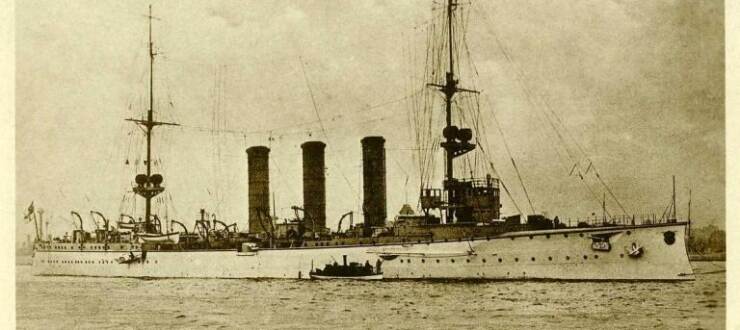The SMS Emden (the Fortuyn)
Weblog
On Tuesday we left Christmas Island and went to the Cocos-Keeling Islands. The Cocos-Keeling Islands are a group of 27 coral islands that are located in the Indian Ocean approximately 2700 km north-west of Perth. The main islands form a typical horseshoe-shaped atoll surrounded by a coral reef. Each island has rough coral beaches to seaward and sandy beaches on the lagoon side. The islands are low lying and most are thickly covered with coconut palms. Wildlife on the islands consists mainly of seabirds. Just like on Christmas Island, land crabs are common on all islands and the surrounding reefs support a diverse range of corals, fish and other marine organisms.

After the team unpacked and setup base at ‘The Castle’, we started doing a magnetometer survey again. After that we snorkeled the Phaeton wreck. The Phaeton was built at Sunderland (UK) in 1868 as a composite ship (timber planking over iron frames) and was 46 meter long. It wrecked in Cocos in 1889 while carrying a cargo of copra from Cocos Island back to Europe. At about half past five on the morning of the 25 September the Phaeton was discovered to be on fire. The fire force pump was in the area of the fire and could not be reached safely and the vessel could not be saved. To avoid blocking the entrance to the lagoon, the Phaeton was run aground in its present position, broken up and salvage. We hope to make a 3D photogrammetry model of the remains of the Phaeton using photos and video we made.
Besides looking for the Fortuyn and the Aagtekerke one of our objectives here is to properly record the SMS Emden. This German light cruiser was at her home port of Tsing-Tau in China at the outbreak of World War 1. She was on her way on the 6th of August with orders to her captain Von Muller to destroy as much allied ships as possible. Her rampage in the Indian Ocean was brief but spectacular as she managed to sink 15 merchant ships, a Russian cruiser and a French destroyer in less than two months!
Early on the morning of November 9th the Emden appeared off the Cocos-Keeling Islands, and sent a landing party of three officers and forty-two men ashore to dismantle the cable station that was there. While they were at work the Australian cruiser HMAS Sydney arrived. Although the Emden’s gunnery was excellent and her opening salvo scored a direct hit on the Sydney, she was no real match for the larger ship. Within two hours, she was out of action, and hopelessly disabled. It was then about noon, and the Sydney left her to chase a captured merchantman which had been acting as an escort for the Emden. On her return, about 4.00 pm, she found the Emden still flying her colors, but unable to move. The Sydney signaled to her to surrender, but received no answer, and finally fired several further rounds at her. Only then did von Muller strike his flag. By this time the Emden was blazing furiously amidships, and in an attempt to save as many of his crew as possible he drove her on to the reef fringing the south coast of North keeling.
North Keeling is located approximately 27 km from the main group of islands and is thus quite remote and not a lot of people go there. It was really special to be able to dive there and see the remains of the vessel, because although it has been partly salvaged there is still a lot left of it as you can see on the photos we took. One of our team members even went on the island with Triss from Parks Australia, to document the remains of the vessel on land! Just as with the Phaeton we hope to make a nice 3D photogrammetry model of the ship to get a good overview of the site. We also documented what still remains of the vessel and did a corrosion measurement.
In the following days we will continue our survey for the Fortuyn and the Aagtekerke. We will keep you updated as good as we can with the limited internet access we have here..